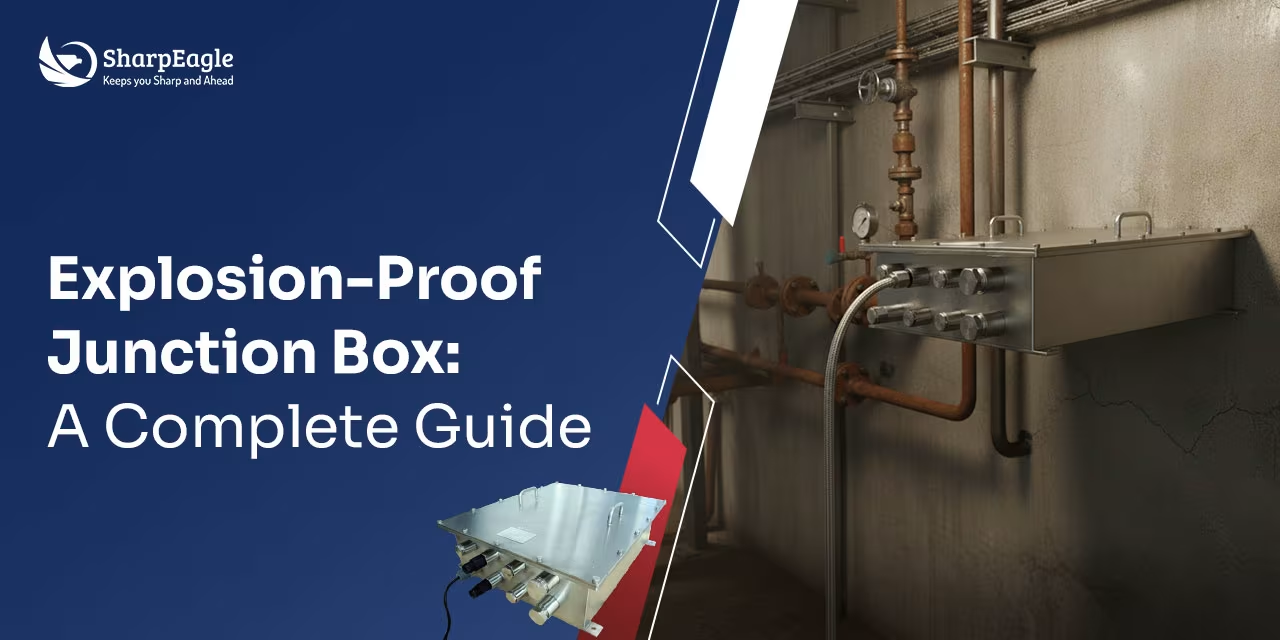
Forklifts cause around 35,000 to 62,000 injuries yearly, according to an article by Forkify. This data highlights the risky nature of forklift operations. Rainy weather adds an extra risk layer, making operating these forklifts safely even trickier.
Poor visibility, compromised reflexes, and sudden changes in floor integrity heighten he risk of forklift accidents. Forklift maintenance in wet conditions can also be challenging, leading to potential damage and reduced efficiency.
However, with proper training and precautions for forklift operators, you can minimize the risks without stopping daily operations. Implement forklift weather protection measures to continue operations under challenging weather. This blog is a guidebook to understand how to improve forklift safety, especially during the rainy season.
Visibility is a huge challenge during cloudy weather. The view of forklift drivers is usually obstructed while carrying big objects with forklifts. Lack of ample lighting further hampers their visibility, increasing the risk of accidents.
To tackle this, you should provide specialized training to your forklift operators to navigate these challenges effectively. Advanced safety equipment such as forklift cameras and LED safety lights can significantly improve visibility in low-light areas. All the equipment is explosion-proof for forklift explosion protection. Incorporating such safety solutions secures your workplace, ensures the safety of your forklift drivers, and trains your workers to utilize these safety features for enhanced safety.
The Occupational Safety Hazard Administration (OSHA) recommends that every safety management should be informed about the forklift safety system and receive the appropriate training. They should also verify the IP protection rating of these safety components. Operating items like forklift cameras in rainy weather is unsafe if they are not IP-approved.
That’s why it is necessary to communicate the consequences of unawareness of the surroundings to your forklift operators, along with the importance of alertness while operating a forklift, especially during rain.
Consider implementing advanced safety systems to minimize distractions for your forklift operators. You can invest in a forklift safety solution with safety lights equipped with motion sensors and audible alarms. It can effectively alert operators to potential hazards and reduce the risk of accidents caused by distractions.
Also Read : Forklift Safety Lights - An Ultimate Defense Against Warehouse incidents
Driving the forklift at optimum speed is essential in wet conditions to prevent accidents. Encourage your operators to operate slowly and maintain a safe distance from another forklift. Incorporate a forklift safety solution with speed monitoring capabilities to ensure operators always adhere to safe speed limits. An intelligent system will track their speed and reduce the risk of accidents in the rainy season. This allows smooth and gradual movement of their forklift with full control.
During the rainy season, the floor might become slippery and unsupportive for driving forklifts. If forklift operators are not trained to drive carefully in wet conditions, they might lose control and severely injure themselves.
When the driver operates a forklift inside the facility after returning from wet conditions outside, it creates wet patches and puddles inside and causes the tire performance to degrade. If they cannot avoid the wet surface contact for their forklifts, train them to proceed with caution and reduce the speed. Proper training will go a long way in ensuring their safety. To reduce the operator’s accountability for speed control, automate the system using speed limiters for maximum forklift protection.
While you can operate internal combustion forklifts under rainy conditions, providing your workers with proper rain protection is essential to reduce the chances of accidents and ensure they are working safely. You can equip them with PVC rain protection to create a shield around the cabin for forklift protection. It will protect them from rain and moisture. Consider supplying personal rain protection gear like waterproof jackets, pants, and gloves to ensure they can work comfortably during rain.
Equip your forklifts with attachments that are compatible with wet or slippery surfaces. Install camera systems within forklifts. A rearview camera can help your operators see if the floor is wet. If they can know it in advance, they can avoid the area altogether. In addition, use specialized traction tires during monsoon to reduce the risk of hydroplaning. You can also use rotators in your forklifts as they allow your operators to rotate the load in a horizontal motion. Moving horizontally can help avoid sharp turns or sudden movements that could contribute to losing control on the slippery surface.
You can opt from a wide range of forklift safety solutions suitable for your workplace and mitigate the risk of accidents. Explore your options.
Despite your best efforts to prevent accidents, emergencies can still occur, especially during the rainy season. Hence, implementing robust emergency response protocols is essential for mitigating risks and ensuring the safety of your workers in case of an accident. This includes establishing clear communication channels, designating emergency response teams, and conducting regular drills to rehearse emergency procedures.
Firstly, you need to give basic first-aid training to your operators. Make emergency medical supplies, such as first aid kits and AEDs, that are easily accessible and readily available throughout the facility. Additionally, establish protocols for reporting accidents and injuries promptly to initiate the appropriate response and investigation.
Forklift accidents during the rainy season are a challenge for every industrial operation. Accidents result in high compensation and legal fees for those affected.
Implementing the necessary safety solutions and measures significantly reduces the risk of such accidents. Our forklift safety solutions, including camera systems, anti-collision technology, and speed limiters, are designed to navigate rainy conditions safely.
Book a free consultation with our experts to learn more about world-class forklift safety solutions from SharpEagle.
When you operate a forklift on a damp surface, drive cautiously at a slow speed to maintain control. Avoid sudden movements and be extra careful while turning or applying brakes to prevent skidding. Make sure to inspect the tires regularly and wear non-slip boots. Familiarize yourself with safety lights and use them while operating a forklift on a wet surface to see the surface and avoid driving there, if possible.
You can improve forklift safety with comprehensive safety training. Please educate yourself about the available safety solutions and how they help you prioritize safety at your workplace. You can contact our experts to learn about such safety solutions. To further improve forklift safety, Implement regular maintenance schedules to ensure forklifts are in optimal condition.
Yes, you can use a forklift in the rain if it meets safety standards. You should have proper precautions and safety measures to utilize it in the rain. Provide weatherproof forklift protection and educate the operators about controlling speed. Implement routine inspections and maintenance checks to ensure forklifts are equipped to handle inclement weather conditions safely.
Rugged tyres with deep treads make a forklift suitable for rough terrain. Also, these forklifts have higher ground clearance and robust suspension systems to navigate uneven surfaces effectively.




